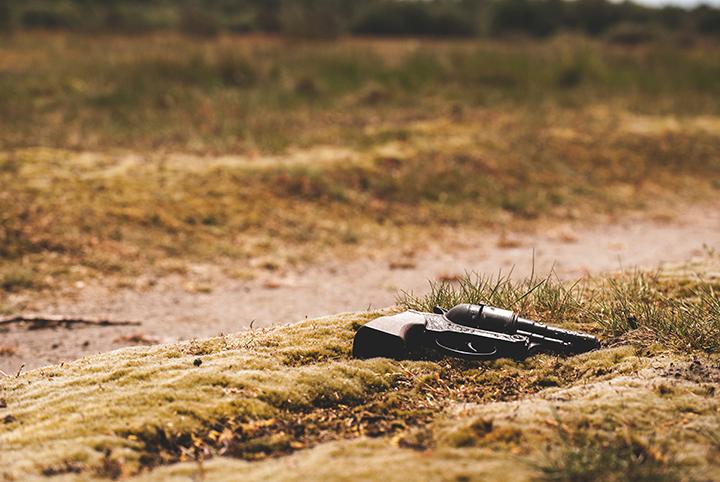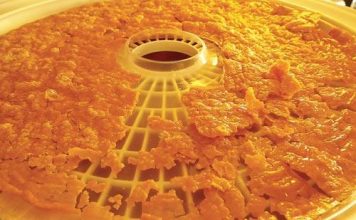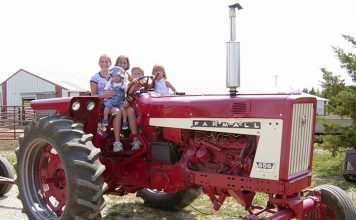 |
|
| Issue #54 • November/December, 1998 |
You can get as high-tech as you feel you might need when you select the firearm(s) you’ll use to protect your family. I “do firearms” for a living, and the gun I prefer to have at the bedside is a customized Beretta 92 with super-accurate Jarvis barrel and kick-reducing Magna-Port. It has night sights and an attached SureFire flashlight, and is loaded with an extended 20-round magazine of 115 grain +P+ 9mm hollowpoints.
Does one need to go that high-tech? Frankly, no. A basic handgun will get you through tough challenges. If I was going to have only one firearm in the home for family protection, it would be a handgun. Despite the greater power and other advantages of a rifle or shotgun, it’s seldom practical to take one outside when trouble is expected. You can’t answer a late-night knock at the door with a long gun in your hand without the risk of terrifying an innocent visitor.
The fact that a basic handgun will get the job done was reinforced for me recently at the New Hampshire State Championships of IDPA, the International Defensive Pistol Association. IDPA was developed by a group of pistol champions and tactics instructors who wanted a skill test environment for the kind of handguns cops and lawfully armed citizens use for protection.
 Mark Mazzotta uses a “plain vanilla” Colt Government Model .45 to win the NH IDPA state championships. This gun has protected our nation and its citizens since 1911. Note that there are no scopes, compensators, flashlights, lasers, bells or whistles attached. Mark Mazzotta uses a “plain vanilla” Colt Government Model .45 to win the NH IDPA state championships. This gun has protected our nation and its citizens since 1911. Note that there are no scopes, compensators, flashlights, lasers, bells or whistles attached. |
Which handgun? Most people shoot semiautomatics better (i.e., faster and straighter) than revolvers. Their more modern designs simply have better human engineering. The overall top shot at the match and champion in the Custom Defensive Pistol category was Mark Mazzotta, a grandmaster shooter. His gun, lightly customized by Bill Wilson, was a Colt Government Model .45 auto. This was the primary US military handgun from 1911 to the present, with Delta Force still using it in lieu of the Beretta 9mm that is otherwise standard military issue. The only difference between Mark’s pistol and the one you might have inherited from your grandfather is that Mark’s has been made more accurate with a crisper trigger pull.
Many feel that a high cartridge capacity 9mm makes the most sense for a home defense handgun that might have to be grabbed so suddenly that you can’t access spare ammunition. A 16-shot Smith & Wesson PC 5906 was the gun that Bristol, Connecticut, cop Bryce Linskey used to win both first place in Stock Service Pistol category and top score by a law enforcement officer. It has a smoother action and greater accuracy potential than a stock S&W 9mm, thanks to the ministrations of the S&W Performance Center, but at across-the-room distance will be equalled in performance by the S&W Model 59 pistol your dad might have bought in 1970.
Others split the difference between round count and per-shot power. Winner of the Enhanced Service Pistol class was Tom Calandra, using a Para-Ordnance P-16. This Canadian pistol is essentially a very well made copy of the 1911 Colt, capable of firing 16 rounds of the .40 Smith & Wesson cartridge. The .40 has for many provided the compromise between the high capacity, medium power 9mm pistol and the lower capacity, higher power .45.
A compact 9mm with fewer rounds can also suffice. The female state champion was LFI instructor Deb Morris. She used the HK P7M8 that she carries daily in a Mitch Rosen “Nancy Special,” a hip holster especially designed around the female anatomy. The ergonomics and reliability of this 9-shot 9mm compact pistol mean more to Deb than a few less rounds in the magazine.
Finally, the reliable old revolver is still the general recommendation for first-time handgunners. I managed to win the Stock Service Revolver title with a Smith & Wesson Model 625, the lineal descendant of the World War I S&W 1917 model that was designed to fire the .45 Auto service cartridge with the rounds held together by metal clips. Modern “moon clips” allow a very fast reload of this accurate six-shooter. Half a dozen rounds will still get you through the great majority of “shots fired” home defense situations.
Al Greco had done an action job on my revolver. Is custom gunsmithing necessary for the sixgun to “keep up” with autos? Not necessarily. In second place was the winner of the Winter National Championships of IDPA, Brent Purucker of Smith & Wesson Academy. He uses a box-stock S&W Model 13 .357 Magnum with four inch barrel and what felt like a fourteen pound trigger pull. This simple fixed-sight revolver is part of the Smith & Wesson Military and Police series that was introduced in 1899. It’s not the gun so much as it’s the shooter.
In closing, let me say that when you analyze the outcomes of a lot of violent encounters, you discover that “did you have a gun” and “did you know how to use your gun” are questions a helluva lot more important than “what kind of gun did you have.”
If you have a good quality firearm and know how and when to use it, don’t worry about having all the high-tech goodies.
For information on IDPA and matches near you, contact IDPA PO Box 639, Berryville, AR 72616.














